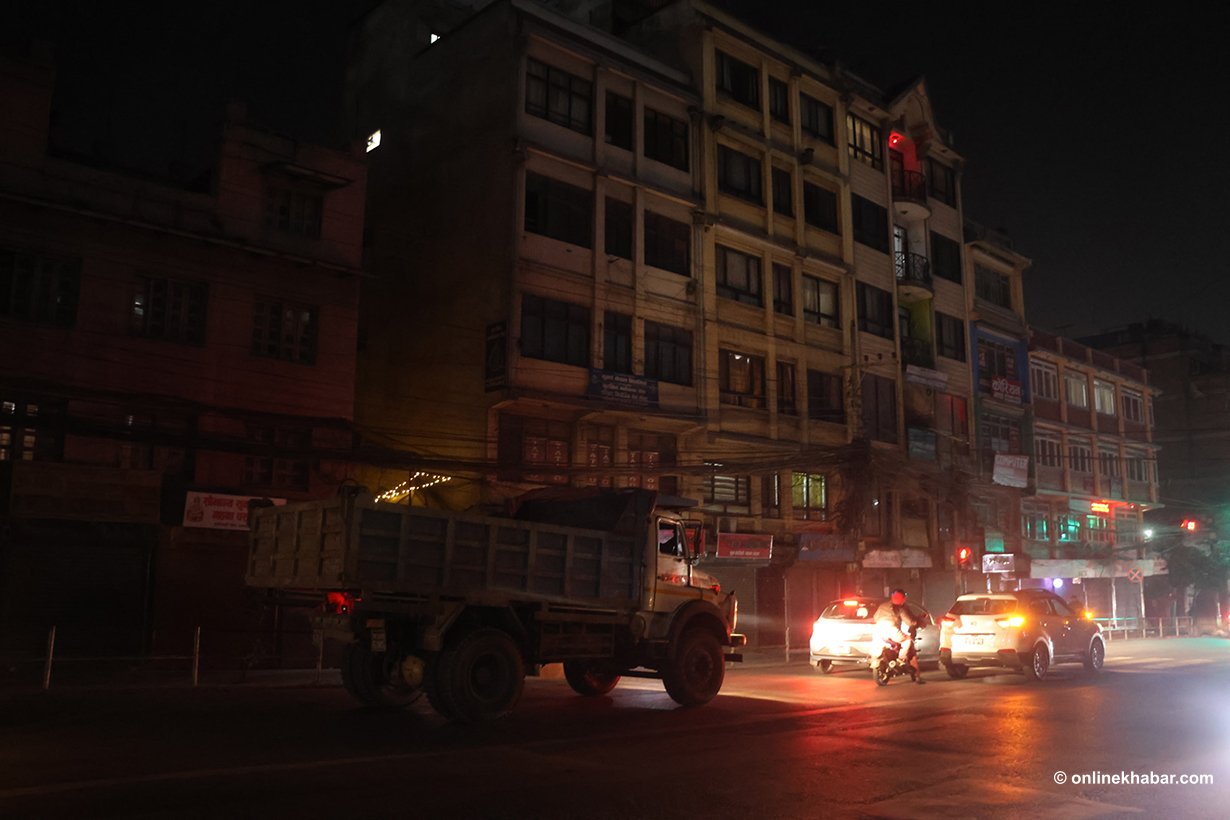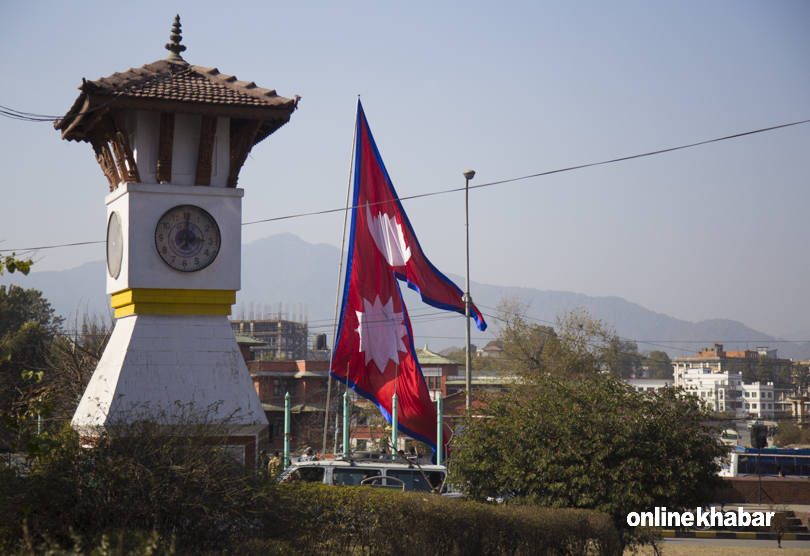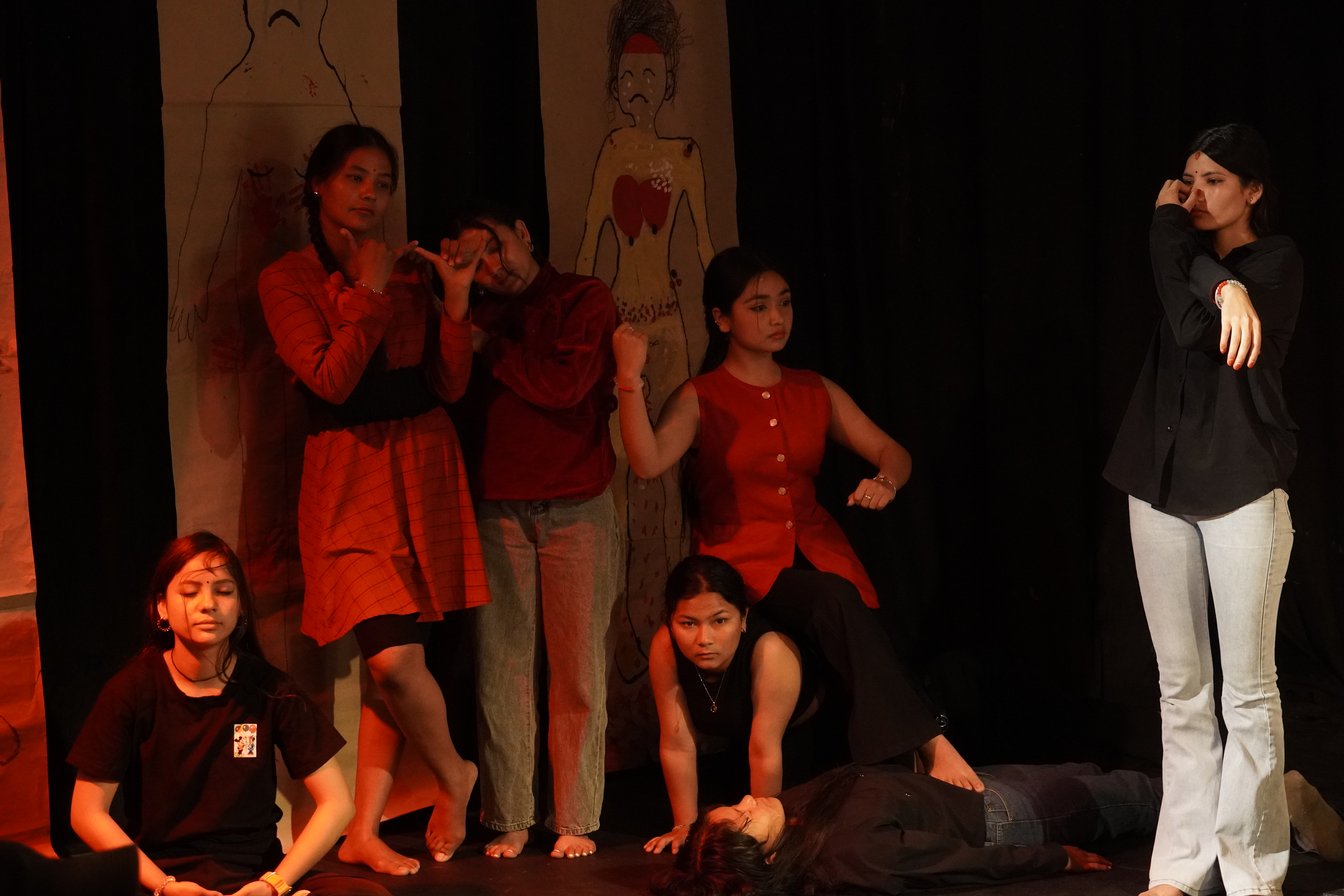
Kathmandu Metropolitan City (KMC) has failed to pay approximately Rs 2 billion in electricity bills for streetlights, prompting the Nepal Electricity Authority (NEA) to cut power to many streetlights across the city.
At a recent executive meeting of KMC, Ward 12 Chairperson Balakrishna Maharjan raised concerns about the growing darkness on city streets. Highlighting the issue, he noted that streetlights on the Teku-Kalanki road via Kalimati are not functioning, leaving locals and commuters in distress.
“Locals are complaining a lot. There are streetlights, but they don’t work. Upon inquiry, we learned that NEA has cut the power supply because the bills haven’t been paid. I want to bring this to the mayor’s attention,” said Maharjan.
However, Mayor Balen Shah did not respond during the meeting. Maharjan’s remarks reflect the reality of several streets in Kathmandu, where darkness has become the norm despite the presence of streetlight poles.
Danger and inconvenience for pedestrians

Key roads such as Tripureshwor, Kalimati, and Kalanki have become perilous for pedestrians at night. “We have to rely on vehicle headlights to navigate. There are poles with lights, but they don’t work. If this is the condition of the capital, what must it be like elsewhere?” asked Sabitra Thapa, a pedestrian on the Tripureshwor-Kalanki route.
Motorcyclists are equally frustrated. Sunil Malakar, a regular commuter, described the road as unsafe. “Sometimes stray dogs attack. You can only see as far as the headlight reaches. The city must address this issue,” he said.
NEA defends power cuts
The NEA has defended its decision, citing unpaid bills as the reason for disconnecting power to certain streetlights.
“We don’t arbitrarily cut power, but the system automatically disconnects if bills remain unpaid. Even government bodies cannot avoid their dues,” said NEA spokesperson Chandan Ghosh.
According to Ghosh, many municipalities, including Kathmandu, owe significant amounts for streetlight electricity. “The issue isn’t limited to Kathmandu; several cities haven’t paid their dues. We’ve cut power only where bills haven’t been settled,” he added.
KMC denies outstanding dues
KMC claims it has no significant dues that would warrant power disconnection. Dhruva Kafle, the head of KMC’s Administration Department and assistant spokesperson, stated that the city has been paying Rs 1.4 to 1.5 million monthly for electricity bills.
“The issue arises from older streetlight setups. There is no clear record of how much electricity these use or when they were installed. NEA claims there are outstanding dues, but we cannot pay arbitrarily. That’s why the payments are on hold,” Kafle explained.
KMC and NEA’s joint inspection identified 38,422 streetlight poles in Kathmandu. Kafle said KMC pays for electricity usage recorded on meters but disputes NEA’s claims of older dues.
Kafle also pointed to road and footpath expansion projects as reasons for the darkness on major routes like Tripureshwor-Kalanki. “These activities have disrupted some streetlight setups, contributing to the issue,” he said.
Kafle further argued that NEA owes KMC significant sums, including pole royalties, lease taxes, and property taxes. “NEA has yet to pay Rs 510 million to KMC. It’s not just about what KMC owes NEA,” he stated.
NEA’s billing breakdown
As of FY 2080/81 BS, NEA records show KMC owes Rs 1.85 billion in unpaid electricity bills. The breakdown is as follows:
- Balaju Distribution Center: Rs 4.75 million
- Baneshwor Distribution Center: Rs 428.6 million
- Ratnapark Distribution Center: Rs 924.7 million
- Kirtipur Distribution Center: Rs 3.8 million
- Kuleshwor Distribution Center: Rs 311.4 million
- Maharajgunj Distribution Center: Rs 184.8 million
Despite KMC’s claims of payment compliance and NEA’s insistence on outstanding dues, the streets of Kathmandu remain in darkness, leaving residents and commuters vulnerable. Both institutions must address this financial and administrative deadlock to restore basic streetlighting in the nation’s capital.





















